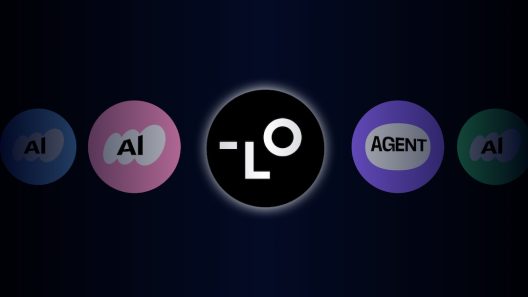There are no secret features in ChatGPT, but there are a few short prompt “codes” that work like magic. They’re incredibly simple (just one or two words) but can make a difference in what you get back.
Whether you’re working on a report, learning something new, writing to a manager, or streamlining a process for your team, they’re worth knowing.

99% of users!
Most of users are using just 10% of ChatGPT’s brainpower. Do you want to improve this indicator and be superior to others, then embark on the ChatGPT secret codes journey, where you will learn more than anyone else.
A significant number of users were like headfirst into the rabbit hole, until they learned about these prompts, when everything changed radically and they learned to talk to AI.
What are these secret codes?
First, let’s break down the concept of the word “code.” It’s not always about technical gibberish or green hacker text on black screens. In the world of conversational AI, “code” can mean a constructed cue that triggers a very specific type of output.
ChatGPT, part of the larger OpenAI ecosystem, operates with complex logic: tokens, context windows, system instructions… all of which most users never directly interact with. These secret cue formats allow you to influence these systems without requiring a computer science degree.
Let’s go to a list right now:
1. Rephrase: (Say it a better way)
Perfect for when something doesn’t quite fit the bill – too wordy, too formal, too vague. When your message feels clunky or too formal, this is your solution. Just say “Rephrase:” and paste the sentence. You’ll get a clearer, more natural version. – perfect for emails, communications, or proposals.
- Example: Rephrase: Thank you for reaching out. I’ll review the document and circle back.
- Perfect for emails, communications, or proposals.
2. TL;DR: (Summarize long text)
Need a quick summary of a long piece of content? Just start with a short, easy-to-understand summary. You’ll get a concise version that’s easy to understand.
- Example: TL;DR: [Paste a long article about Power Platform governance best practices.]
- Perfect for quickly reviewing content or sharing key points with stakeholders.
3. Humanize: (Natural tone)
If your AI output sounds too robotic, this prompt is for you. Sometimes AI-generated writing sounds robotic. Humanization softens the tone and gives it a more natural, conversational feel.
- Example: Humanize: Thank you. I’ll review the document and come back.
- Use this to write warmer emails, personal posts, or engaging blog intros.
4. Jargonize: (Professional/Nerdy tone)
Want to sound more like a consultant or subject matter expert? Add charm and sophistication to your writing. Want to sound like a technical expert or professional consultant? Use jargon to add sparkle and persuasiveness to your writing.
- Example: Jargonize: How AI is changing workplace productivity.
- It’s perfect for pitch decks, LinkedIn posts, and whitepapers.
5. Critique: (Get constructive feedback)
Want honest feedback on your draft? Critique: Provides helpful, actionable suggestions, whether it’s about structure, tone, clarity, or relevance to your audience.
- Example: Critique: My article on using Copilot in HR processes.
- Perfect when you’re too close to your own writing and need another perspective.
6. Compare: (Side-by-side evaluation)
Use this code word when you need to highlight differences (or similarities) between tools, processes, or options. You’ll often end up with a neat table or clear breakdown that will help you make better decisions.
- Example: Compare: Power Pages vs Canvas Apps for external user scenarios.
7. Outline: (Structured planning)
Have a topic in mind but don’t know where to start? Use Outline: to get a structured plan. Whether you’re writing a presentation, a seminar, or a blog post, it gives you a foundation from which to build your work.
- Example: Outline: A training session on designing AI use cases with business stakeholders.
8. Brainstorm: (Generate ideas fast)
When you’re stuck or need a creative boost, use Brainstorm: to come up with ideas. Whether you’re naming a product, planning a seminar, or writing content, this task will help you generate ideas quickly.
- Example: Brainstorm: Power Platform webinar titles for finance leaders.
9. Translate: (Across languages or jargon levels)
Not just for languages – Translate: is great for converting complex explanations into plain English or reframing content for executives, end users, or non-technical teams.
- Example: Translate: A technical description of DLP policies into executive-friendly language.
10. ELI5: (Explain like I’m 5)
Short for “Explain Like I’m 5,” this method simplifies complex topics into clear, understandable explanations. Simply type ELI5: followed by your question or topic.
- Example: ELI5: What’s the difference between dataverse and SharePoint?
- Gets you simple explanations for complex stuff in seconds.
11. Feynman Technique: (For real deep understanding)
It is different from ELI5. The Feynman Technique: is a simple 4-step method. It helps you understand complex topics in any field.
Here is a 4-step technique that makes it happen:
- Explain it like you’re 5 (use ELI5) (the first one).
- Figure out what you do not know (topic research).
- Simplify the complex info and clarify it in a format.
- Review and repeat the process.
- Example: Feynman Technique: [Your topic or prompt you want AI to break down.]
12. Inverse Prompt: (Reverse Ingineering)
If you want to reverse-ingineer great content, this prompt is just for you.
- Example: Inverse Prompt: What prompt would generate this response?
- Perfect for studying viral tweets, polished copy, or even images.
Conclusion
Here we select 12 simple ChatGPT secret codes to help get better answers from your conversations with AI. These aren’t just “nice-to-know” tips. They’re superpowers in disguise.
Whether you’re writing content, learning faster, or boosting productivity, these helpful codes making ChatGPT feel less like a chatbot and more like a tool you can shape with the right words.
Most users never go beyond the basics, but now you know. Use them. Share them. And most importantly, experiment. That’s where the real magic happens.














